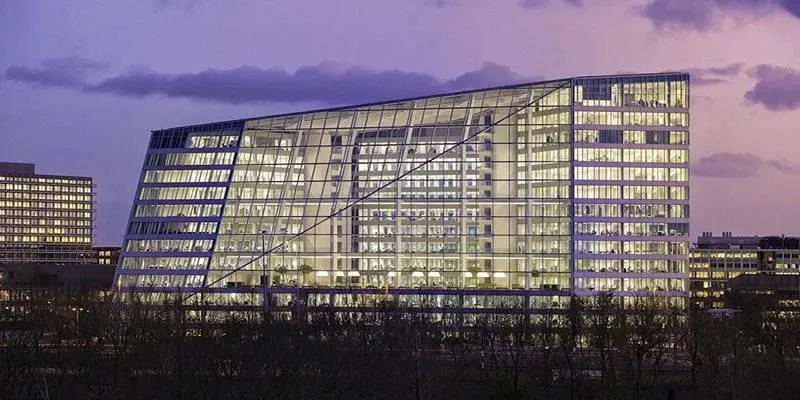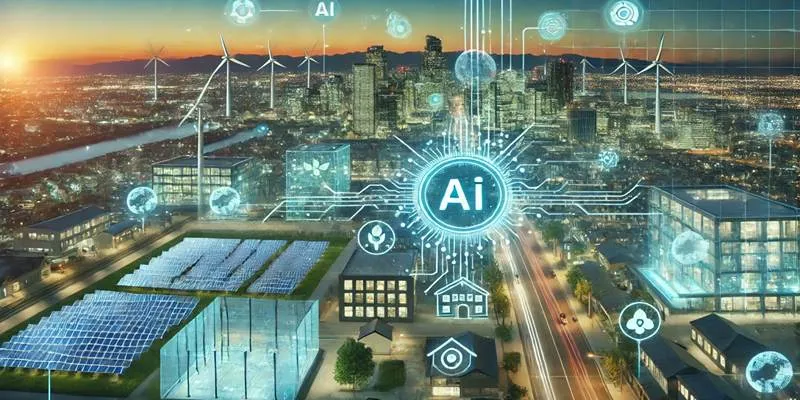In today’s rapidly growing urban environments, smart and efficient building management is more crucial than ever. As energy demands rise, AI is playing a pivotal role in creating buildings that are not only energy-efficient but also comfortable for their occupants. Smart buildings equipped with AI have the capability to learn, predict, and adapt to changing needs seamlessly. This post explores the role of AI in smart buildings, particularly in enhancing energy efficiency and improving indoor environments.
Understanding Smart Buildings
Smart buildings leverage advanced technologies to manage lighting, HVAC (heating, ventilation, and air conditioning), security systems, and more. These systems are interconnected through sensors and devices that feed data to a central monitoring and control system.
Smart buildings aim to:
- Reduce energy consumption
- Enhance safety
- Provide superior living and working conditions
- Lower maintenance expenses
Integrating AI into these systems adds an additional layer of intelligence, enabling real-time data analysis and decision-making.
Boosting Energy Efficiency with AI
One of the most significant benefits of incorporating AI in smart buildings is enhanced energy efficiency. Traditional building systems often operate on fixed schedules, leading to unnecessary energy usage. In contrast, AI optimizes processes in real-time by analyzing data such as occupancy rates, weather conditions, and historical usage patterns.
Smart Energy Management

AI-powered systems continuously optimize energy-intensive components, including:
- HVAC systems: AI adjusts heating and cooling based on occupancy, outdoor weather, and indoor conditions.
- Lighting: Smart lighting systems utilize motion and daylight sensors, with AI dimming or switching off lights in unoccupied or naturally lit areas.
- Equipment scheduling: AI identifies optimal times for operating heavy equipment to avoid peak energy tariffs.
These measures not only decrease electricity consumption but also minimize the building’s carbon footprint.
Load Forecasting and Demand Response
AI enables buildings to predict energy usage and engage with the power grid. Through demand response programs, buildings can adjust or shift consumption during peak demand periods. AI algorithms assist in:
- Forecasting peak load times
- Shifting non-essential operations to off-peak hours
- Communicating with utilities for energy buy-back or rebate opportunities
By leveraging these capabilities, AI-enabled buildings actively participate in sustainable energy ecosystems.
AI-Driven Predictive Maintenance
AI not only optimizes energy use but also protects building infrastructure. With predictive maintenance, AI employs sensor data and machine learning to foresee equipment issues before they arise.
Building management systems continuously monitor devices like air conditioning units, elevators, and pumps. The benefits of predictive maintenance include:
- Lower repair costs
- Reduced downtime
- Prolonged equipment lifespan
- Enhanced operational reliability
This proactive approach ensures smoother operations and minimizes disruptions for building occupants.
Enhancing Occupant Comfort with AI
While reducing energy consumption is vital, maintaining or enhancing comfort levels is equally important. AI helps smart buildings achieve this balance by continuously adapting indoor environments to occupant preferences and needs.
Customizable Indoor Environments
Over time, AI learns individual preferences and usage patterns. In an office setting, for example, AI might recognize that a specific meeting room is consistently used at 10 a.m. and pre-adjust the temperature and lighting accordingly.
Personalized controls encompass:
- Temperature adjustments in occupied areas
- Lighting intensity based on user preferences
- Noise and ventilation levels to enhance productivity and well-being
By adapting to occupant behavior, AI fosters environments that are both comfortable and energy-efficient.
Enhanced Air Quality and Well-being
AI also promotes health by monitoring indoor air quality. Poor air quality can lead to fatigue, headaches, and reduced productivity. AI systems respond to changes in CO₂ levels, humidity, or pollutants by:
- Increasing ventilation rates
- Activating air purification systems
- Notifying facility managers when levels surpass thresholds
Maintaining clean, healthy air is especially crucial in the post-pandemic era, where ventilation is key to ensuring safer indoor spaces.
Real-World AI Applications in Smart Buildings
AI in smart buildings is not just a concept—it’s being implemented worldwide.
The Edge, Amsterdam

Renowned as one of the most advanced and eco-friendly buildings globally, The Edge utilizes AI to:
- Analyze office usage patterns
- Adjust lighting and temperature for energy efficiency
- Provide personalized comfort based on employee preferences
Singapore’s Smart Nation Buildings
Singapore is at the forefront of smart building adoption. Its AI systems:
- Monitor occupancy and adjust systems accordingly
- Enhance energy performance by predicting usage trends
- Track air quality in real-time
These examples demonstrate how AI is revolutionizing building design and management.
Advantages of AI in Smart Buildings
Here’s a quick overview of the primary benefits of integrating AI into smart buildings:
- Energy Savings: Reduced power consumption for lighting, cooling, and heating
- Cost Reduction: Lower energy bills and maintenance costs
- Enhanced Comfort: Tailored lighting and temperature settings
- Extended Equipment Life: Early issue detection prevents major failures
- Improved Health: Cleaner air and optimal lighting enhance well-being
These benefits make AI a worthwhile investment for both residential and commercial buildings.
Conclusion
AI is transforming the way we approach energy management, comfort, and sustainability in smart buildings. By integrating AI technologies, buildings can significantly reduce energy consumption and costs while enhancing occupant comfort and well-being. Although there are challenges in implementing these systems, the long-term benefits highlight the essential role of AI in the future of building design and management. Whether you are a building owner, manager, or occupant, the potential of AI in smart buildings is undeniable.
 zfn9
zfn9





















